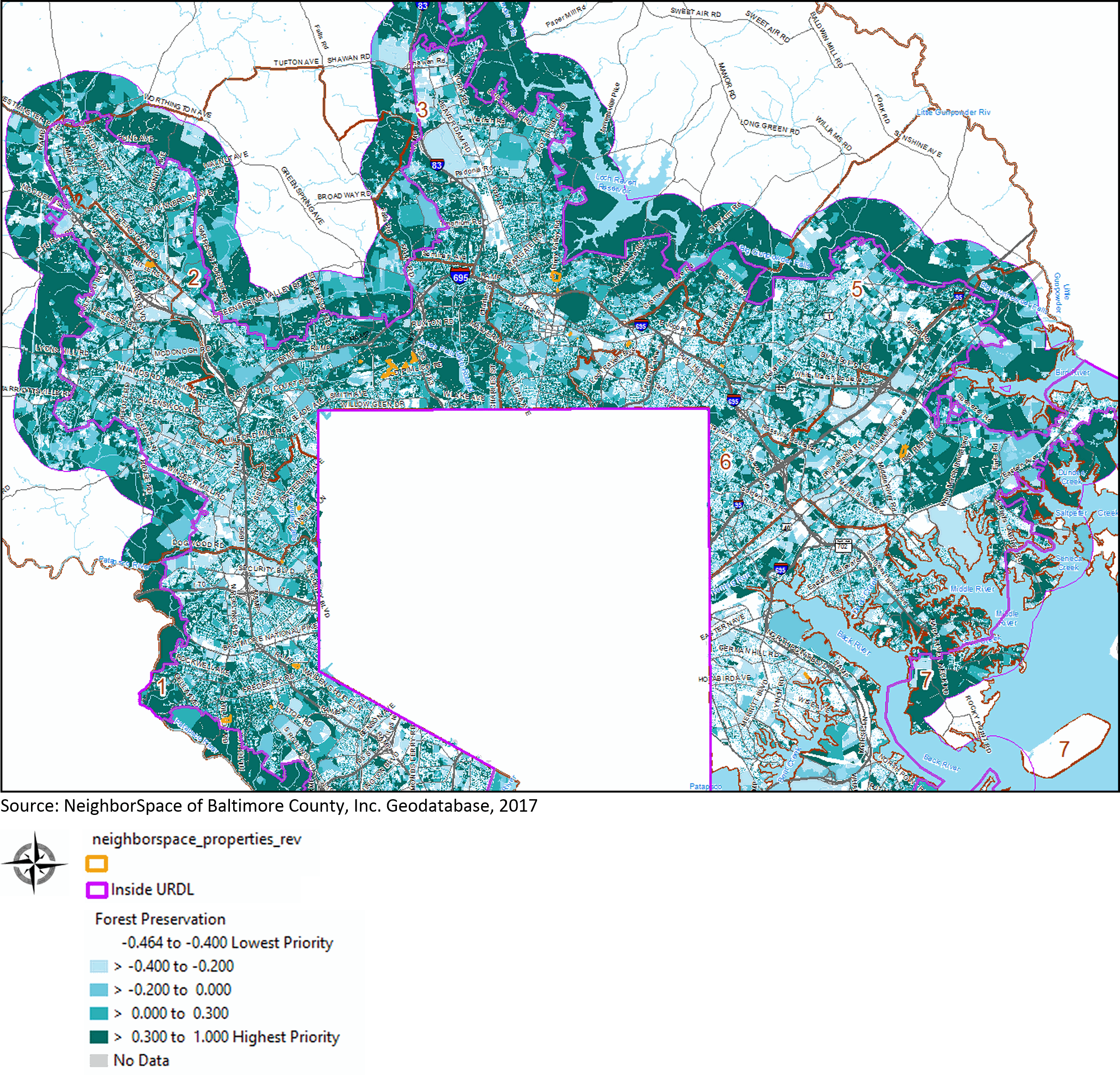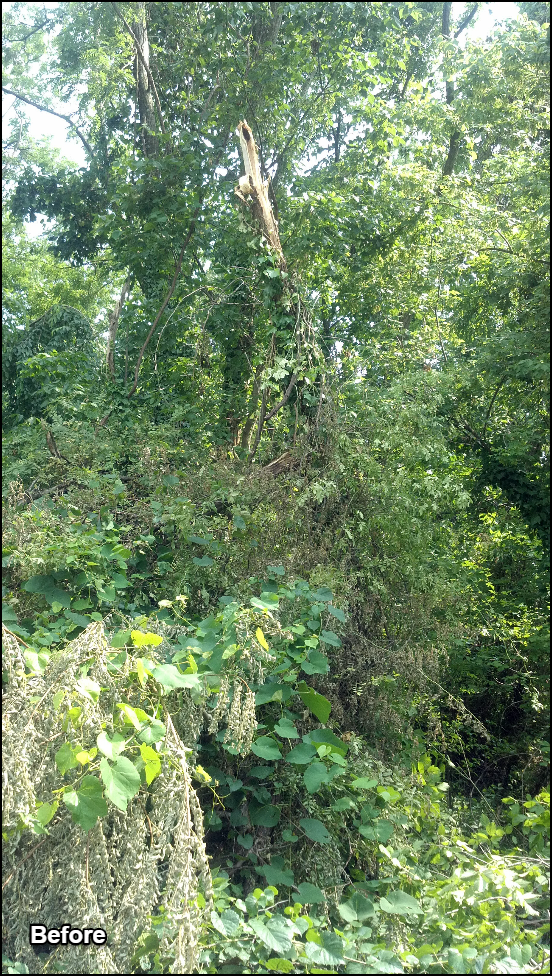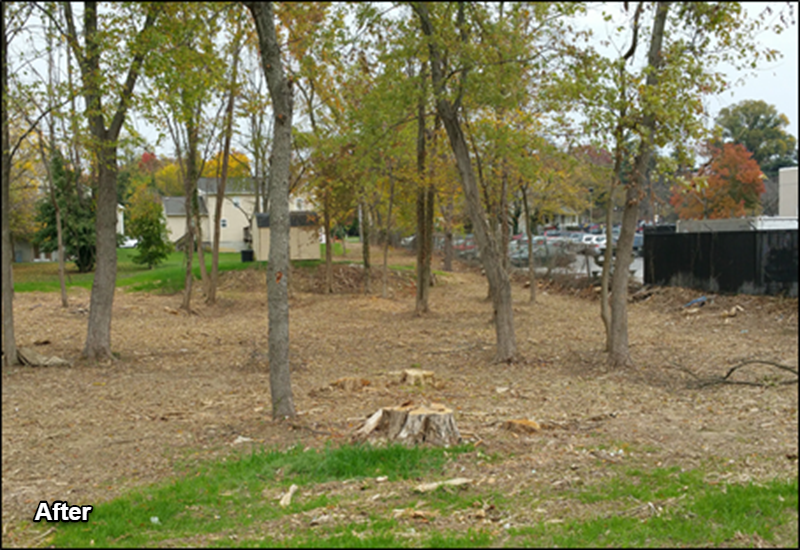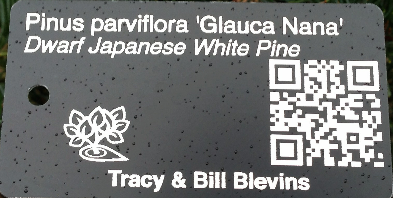Money Doesn't Grow on Trees ... Or Does It?
The Rationale for Creating the Donald C. Outen Urban Tree Society
When New York's Parks Department assessed the value of the City's urban tree canopy, the benefits totaled $120 million annually, 5.5 times the department's annual budget. The breakdown included energy savings of $28 million, air quality improvements of $5 million, and storm water mitigation of $36 million. It was estimated, further that every big tree intercepted 1,432 gallons of stormwater annually. Trees, it turns out, are not expensive ornaments. Rather, they are an essential part of the urban, or, in our case, "inner suburban" landscape.
Using our new mapping tool to assess tree canopy quality, we now know that across our 18 existing properties totaling over 85 acres, four have a forest preservation map score result of “medium,” two have a result of “medium-high” and the balance (66%) have a result of “high.” Clearly, a focus on forest preservation needs to be a part of the management plan for each of our existing properties. As we shall see, moreover, there is also a pressing need for reforestation efforts.
Forest Preservation Opportunities Inside the URDL

-
BACKGROUND
-
County Policy on Urban Tree Canopy
-
Baltimore County has a goal of achieving and maintaining a 40 percent tree coverage within more populated areas inside the Urban Rural Demarcation Line. The County cites the benefits of forests and trees as follows:
Forests and trees provide many critical benefits for communities and our natural environment. County-wide, forests and trees remove and store atmospheric carbon, helping to reduce greenhouse gases and cool the land. In developed areas, trees shade and cool buildings, lessen the heat reflected from paved areas, and enhance the quality of life with their natural beauty. In addition to providing wood, other products and employment for the forest industry, forests help reduce flooding and soil erosion during storms, thereby stabilizing watersheds and providing clean water to streams, reservoirs, and the Chesapeake Bay. Forests provide critical habitat for wildlife and opportunities for nature-based recreation. (Source: Baltimore County Dept. of Environmental Protection and Sustainability, http://www.baltimorecountymd.gov/Agencies/environment/forestsandtrees/)
The County’s priority forest management goals are as follows:
-
Conservation - Reduce the rate of forest loss ('keep forest as forest')
-
Reforestation - Strategically re-forest stream buffers, areas adjacent to existing forests, and urban areas
-
Forest Health - Restore and maintain forest and tree health
-
Stewardship - Provide stewardship education for private citizens who collectively own 75 percent of total forest cover. (Source: Baltimore County Dept. of Environmental Protection and Sustainability, http://www.baltimorecountymd.gov/Agencies/environment/forestsandtrees/)
-
-
Existing Tree Canopy within the URDL
-
As shown in the table below, tree canopy currently comprises 40.26% of the acreage within Census Designated Places (CDP) inside the URDL, slightly exceeding the coverage goal.
|
Census Designated Place
|
CDP Acres
|
Tree Canopy Acres
|
Percent Tree Canopy
|
|
Arbutus
|
4193.5
|
1499.3
|
35.75%
|
|
Bowleys Quarters
|
2000.7
|
978.2
|
48.89%
|
|
Carney
|
4489.7
|
2129.9
|
47.44%
|
|
Catonsville
|
9010.8
|
4971
|
55.17%
|
|
Cockeysville
|
7340.6
|
2059.3
|
28.05%
|
|
Dundalk
|
8402.7
|
1746.7
|
20.79%
|
|
Edgemere
|
7065.4
|
2059.3
|
29.15%
|
|
Essex
|
5898.3
|
2502.3
|
42.42%
|
|
Garrison
|
2010.5
|
848.1
|
42.18%
|
|
Hampton
|
3660.9
|
2207.5
|
60.30%
|
|
Landsdowne
|
2749.7
|
842.9
|
30.65%
|
|
Lochearn
|
3585.7
|
1668.2
|
46.52%
|
|
Lutherville
|
4755.8
|
2109.1
|
44.35%
|
|
Mays Chapel
|
2396.6
|
1101.6
|
45.97%
|
|
Middle River
|
4998.8
|
1871.7
|
37.44%
|
|
Milford Mill
|
4463.3
|
1650.8
|
36.99%
|
|
Overlea
|
1937.9
|
708.2
|
36.54%
|
|
Owings Mills
|
6144.1
|
2443.1
|
39.76%
|
|
Parkville
|
2742.8
|
868.4
|
31.66%
|
|
Perry Hall
|
4453.8
|
1873.4
|
42.06%
|
|
Pikesville
|
7952
|
3828.3
|
48.14%
|
|
Randallstown
|
6618.3
|
2832.4
|
42.80%
|
|
Reisterstown
|
3297.6
|
1279.9
|
38.81%
|
|
Rosedale
|
4442.2
|
1629.9
|
36.69%
|
|
Rossville
|
3462.4
|
1211.6
|
34.99%
|
|
Towson
|
9100.9
|
4508.9
|
49.54%
|
|
White Marsh
|
3420.4
|
1281.7
|
37.47%
|
|
Woodlawn
|
6140.2
|
2336.6
|
38.05%
|
|
Total (within URDL)
|
136,735.6
|
5,5048.3
|
40.26%
|
Source: Baltimore County Dept. of Environmental Protection and Sustainability (http://www.baltimorecountymd.gov/Agencies/environment/forestsandtrees/treecanopy.html)
-
-
Quality of Tree Canopy on NeighborSpace Sites
-


Our experience on many of our sites has shown that the quality of the canopy is threatened by invasive species. Above, is a photo of Adelaide Bentley Park before we made an effort to develop a park. The overall map score for this park was in the medium-high range, largely because of the potential for forest preservation. As shown in the "after" photo above, however, we were able to preserve very little of the existing tree canopy, owing to the negative impacts of invasive species. The cost of removing the invasives and dead/decaying trees at Bentley Park exceeded $8,000, including goats, spraying, tree removal and mulching. Reforestation and related expenses exceeded $19,000.
-
-
Efforts to Protect the Tree Canopy in Baltimore City
-
In Baltimore City, Baltimore Green Space (BGS), an urban land trust, has established that “forest patches,” defined as areas of canopy of at least 10,000 square feet, make up 34 percent of Baltimore’s tree canopy. Twenty percent of this canopy is in forest patches outside parks, according to BGS. In a 2013 study funded by the Rauch Foundation, the Fund for Change and the U.S. Forest Service, BGS concluded that few of the patches were protected by the current network of State and city regulations that protect trees and forest. The organization surmised that new tools were needed and offered several policy recommendations. Among these were (1) determining the financial value of forest patches (i.e. the value of ecosystem services provided) and the cost of care, and (2) engaging residents in the stewardship of these patches through education provided by BGS’ new forest patch program. (M. Avins. Baltimore’s Forest Patches: Emerald Assets for Ecosystem Services (Baltimore Green Space: 2013)
-
The Donald C. Outen Urban Tree Society
In light of the foregoing benefits provided by trees, County tree canopy goals, NeighborSpace experience, and efforts to protect and enhance the tree canopy elsewhere, NeighborSpace has created the Donald C. Outen Urban Tree Society. Key aspects of the program are as follows:
-
-
Purpose
-
The purpose of the program is to protect and regenerate the trees, tree canopy and forest floor ecosystem of the properties NeighborSpace conserves inside the URDL and to educate citizens about their care and value to the urban landscape.
-
-
Naming – Don Outen
-
Don worked as a Natural Resource Manager in the Baltimore County Dept. of Environmental Protection and Sustainability from 1987 until January of 2017, when he retired. For 15 of his 29 years with County government, he worked to implement the County’s Forest Sustainability Program, which seeks to develop and maintain healthy forests, woods, trees, and conservation landscapes. Importantly for the work of NeighborSpace, Don was the impetus behind the County’s Urban Tree Canopy Goals included in the Sustainability Program. In 2015 he received the Lifetime Achievement Award for Forest Management and Preservation from the Alliance for the Chesapeake Bay. He is well-known and –respected in conservation circles, advanced the cause of forest management and preservation immeasurably during his career, and, by all accounts, was a truly dedicated public servant during his 29 years in County government. It is a tremendous honor for us that Don has agreed to lend his name to this cause.
-
-
Sponsorship Levels
-
The sponsorship levels of the program are as follows:
|
Legacy Trees (> 48”DBH*)
|
$1000
|
|
Heritage Trees (32-47.99” DBH)
|
$750
|
|
Mature Trees (15-31.99” DBH)
|
$500
|
|
Immature Trees (8-14.9” DBH)
|
$250
|
|
New Trees (up to 7.99” DBH)
|
$100
|
*DBH measures the diameter of a tree at breast height.
-
-
Policies
-
-
Sponsorship trees will be made available, first, to existing members of NeighborSpace and then to the general public on a first-come, first-served basis.
-
New park trees will be replaced at no cost to the donor. Where existing tagged trees must be felled owing to becoming diseased or dangerous, the donor will be offered the opportunity to select a tree of similar size to the one originally planted on the same or a different NeighborSpace property.
-
Standardized language for the tree tag will include the genus, species and common name of the tree, and the name of the donor. The tag for trees under 8” DBH will be attached to a leading branch with a wire. Tags for trees 8” DBH or greater will be attached using a “plantsmap.com” tree mount hardware set, which consists of 2 washers, a spring, and a star-head screw, as this method of tagging has been found to be safe and economical. An added benefit of the plantsmap product is that it contains a QR code linked to educational information about the tree. A sample Plantsmap tag is shown below.
-
NeighborSpace will coordinate the timing and installation of tree tags.
-
NeighborSpace will replace a park tree tag if it is damaged or stolen.
-
Funds collected through the Outen Urban Tree Society may be used for tree planting and maintenance, ecosystem maintenance (e.g., removal of invasive species, trash and debris), educational activities and materials, and payment of staff to perform any of these services. Up to 35% of the amounts collected may, at the discretion of the NeighborSpace Board of Directors, be applied to administrative costs.
Sample Tree Tag

Sponsor a Tree
If you are interested in sponsoring a tree, click here and we'll send you a tree map listing current opportunities.
Pingback: Help improve the canopy's quality in your neck of the woods - NeighborSpace of Baltimore County